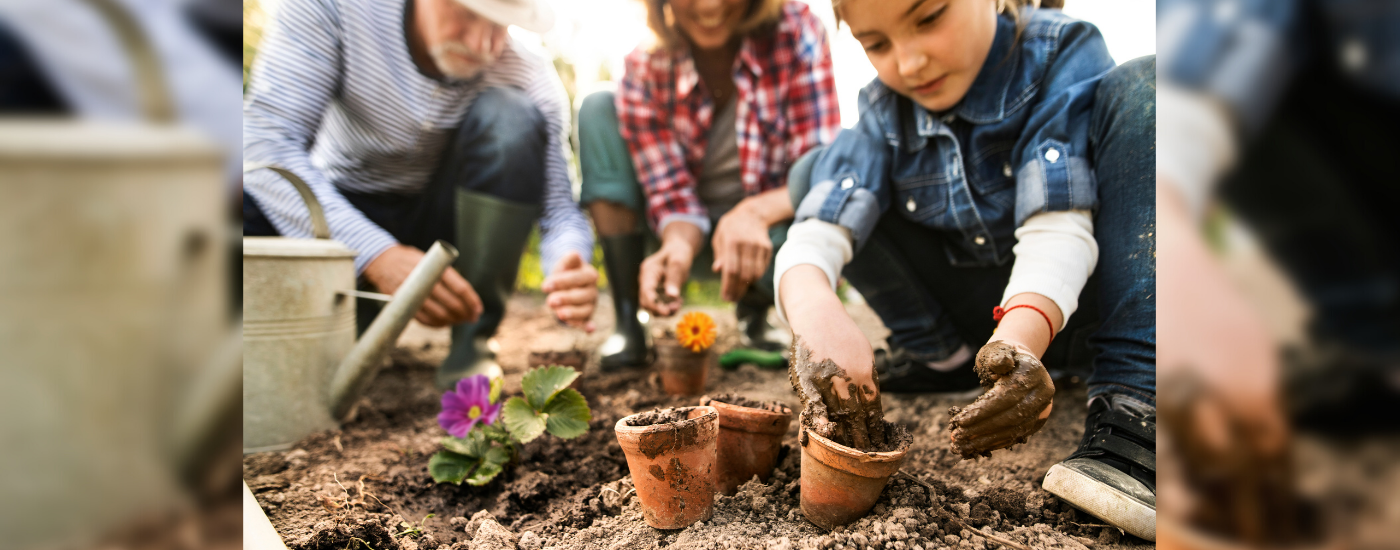As a homeowner, Earth Day is the perfect time to improve your property and reduce your carbon footprint in the process. Earth Day—which falls every year on April 22—started as a reaction to a disastrous 1969 oil spill in Santa Barbara, California. Led primarily by college students at the time, the one-day event grew into a movement dedicated to protecting the environment and raising awareness about water and air pollution. Today, nearly one billion people in more than 190 countries celebrate every year.
If you want to participate in this year’s Earth Day celebration, there are lots of ways to get involved. Keep reading to learn more about how you can be a green homeowner, celebrate Earth Day, and do your part in taking care of the environment.
How green is my home right now?
A home’s carbon footprint is the total amount of greenhouse gasses released into the atmosphere each year. According to the Center for Sustainable Systems at the University of Michigan, a typical U.S. home has a carbon footprint of 48 metric tons of carbon dioxideCO2e per year.
The first step to making positive changes to reduce your carbon footprint is to figure out what yours is. To gather more insight, you can use the Environmental Protection Agency’s (EPA) carbon footprint calculator or The Nature Conservancy’s carbon footprint calculator.
14 easy ways to become a green homeowner
Small home changes have a big impact on the environment. Whether you’re using less water with a brand-new toilet or investing in solar panels, you can save energy, lower your carbon footprint, and even potentially save money. You may even want to check with your home insurance provider about available discounts to your home insurance policy when you make sustainable changes to your home.
Here are 14 different ways to make your home more eco-friendly:
- Use cold water while doing laundry. A washing machine uses about 90% of its energy toward heating the water.
- Buy energy-efficient appliances. Look for the ENERGY STAR label for products that are backed by the government as being energy efficient.
- Join in with neighbors and buy groceries in bulk from your local farmer’s market to reduce packaging waste and support local farmers. Do a DIY home energy audit to find out which items in your home are wasting the most energy. (Hippo Tip: some energy companies will do it for free.)
- Save water where you can. Turn off the water when brushing your teeth, only use your washer when you have a full load of clothes, or take shorter showers.
- Try growing your own fruits and veggies in a home garden so you waste food less food and packaging.
- Buy reusable bags to keep plastic out of the landfills. Check your favorite grocery store chain for durable options.
- Take a shower. By taking a shower instead of a bath, you’ll save an average of 50 gallons of water per year.
- Invest in solar panels to save energy—and cut back on your energy bill.
- Replace your toilet. Newer toilets use 20% less water than the federal regulation of 1.6 gallons per flush.
- Don’t speed when driving. Not only will you use less gas and reduce the harm to our environment, but you’ll also lower your chances of a speeding ticket.
- Add some green to your home. House plants do more than spruce up your decor—they also increase oxygen levels.
- Try smart power strips. A lot of appliances can drain energy when they’re plugged in but not turned on. Smart power strips conserve energy when your devices are in standby mode.
- Look for used household fixtures. Some stores sell homebuilders surplus home items like doors, windows, and faucets.
- Begin recycling by starting small, placing separate bins by your trash can for recyclables, and finding out whether your current waste management company picks up your recycling or if you will have to drop it off.
Get an insurance policy that supports your green goals
An eco-friendly lifestyle helps you, your home, and the environment. When it comes to your homeowners insurance, it’s a good idea to find a provider and policy that supports—and rewards—your green goals.
Hippo is here to help you with all of your home insurance decisions. You have a variety of options available to you. Whether you receive professional advice from our Hippo Home Care or from our knowledgeable agents who can help you find the perfect amount of coverage for your newly xeriscaped property, we are here with you every step of your homeowner journey.
Expand your going-green knowledge and click to keep reading about sustainable decorating tips on Hippo’s blog.




